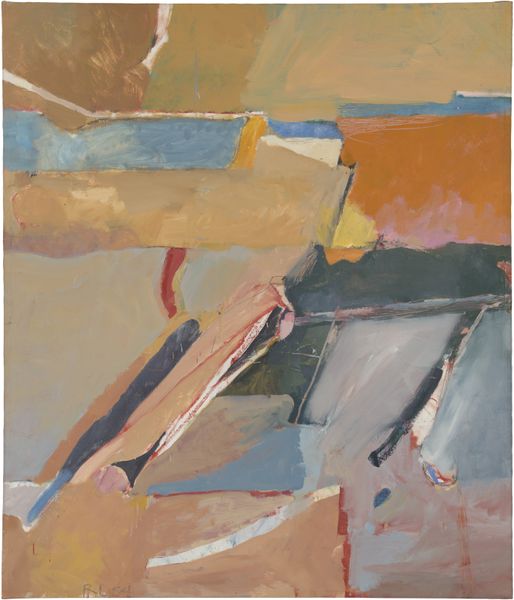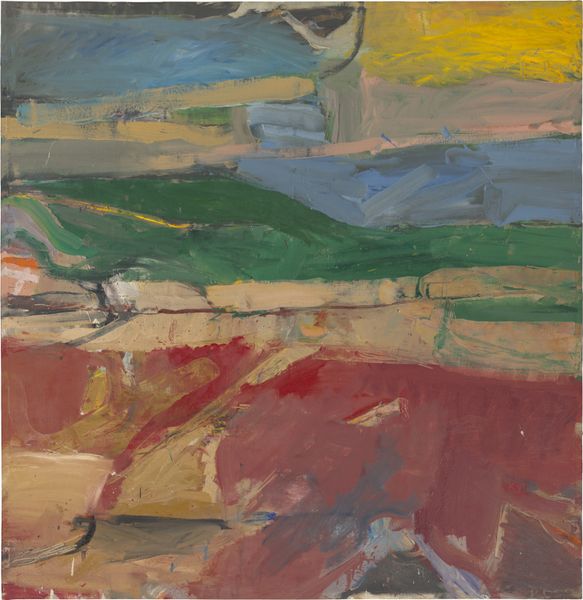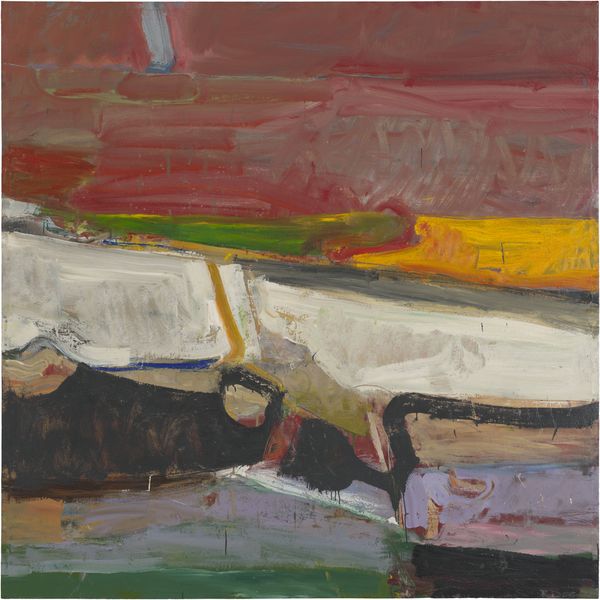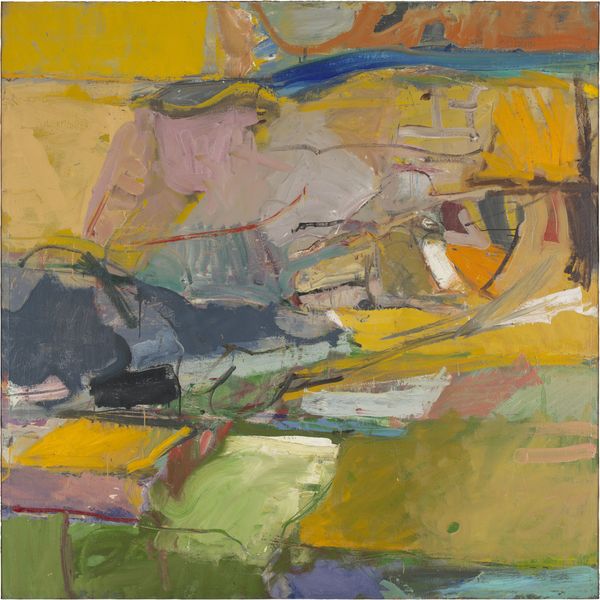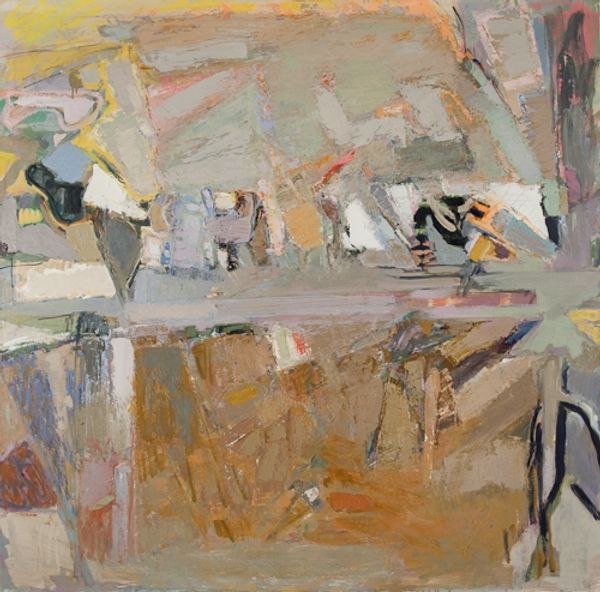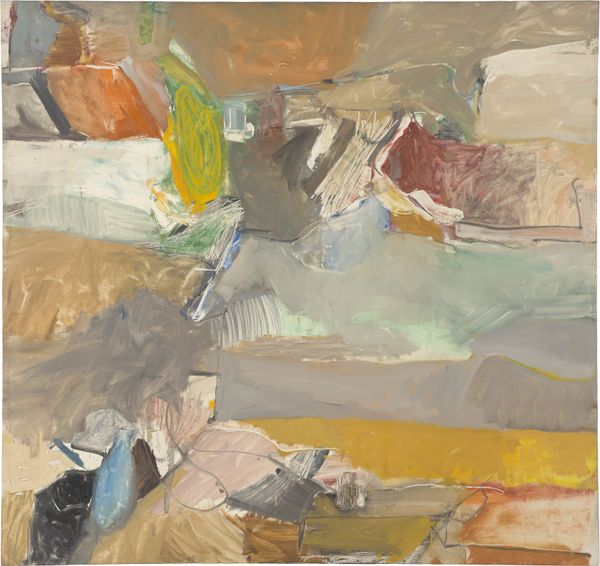
oil-paint
#
abstract-expressionism
#
abstract expressionism
#
oil-paint
#
landscape
#
oil painting
#
bay-area-figurative-movement
#
abstraction
Dimensions: overall: 148.9 x 136.8 cm (58 5/8 x 53 7/8 in.) framed: 156.1 x 151.3 x 6.3 cm (61 7/16 x 59 9/16 x 2 1/2 in.)
Copyright: National Gallery of Art: CC0 1.0
Editor: Today we are looking at "Berkeley No. 52," an oil painting created by Richard Diebenkorn in 1955. I’m really drawn to the layering of colors. It almost feels like looking at a map. What stands out to you? Curator: The chromatic relationships and the deliberate organization of the composition demand attention. Note the application of paint; Diebenkorn uses thick, almost sculptural strokes, building up the surface to create a tangible presence. Consider the structural framework. The horizontal bands create a sense of stability, but they are interrupted by diagonal thrusts that disrupt the tranquility. Editor: So you’re saying it's less about what's depicted and more about how the painting is put together? Curator: Precisely. Observe how the artist plays with contrasting textures, juxtaposing areas of impasto with smoother, more diluted passages. What effect does that have on you, visually? Editor: It makes me consider the physicality of the paint itself and the artistic gesture. It brings a different dimension to it; there is something sculptural about it. Curator: It becomes less about representation and more about the essence of painting itself. The color choices, while seemingly arbitrary, engage in a complex visual dialogue. They resonate in ways that both soothe and provoke, creating an oscillating visual experience for the viewer. Editor: I can appreciate that – looking beyond the representational and focusing on how color and texture play together to create the effect, is really transformative. Curator: Exactly! The essence lies in its materiality and formal arrangement, giving voice to unspoken and hidden structural elements.
Comments
No comments
Be the first to comment and join the conversation on the ultimate creative platform.
